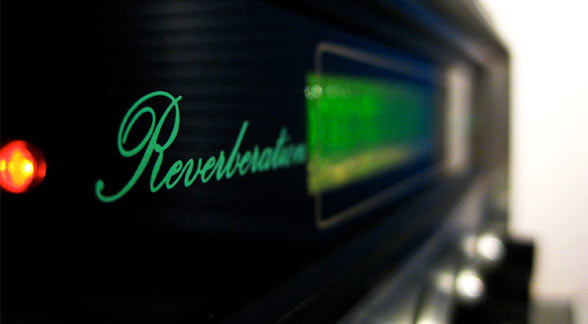What About Ambiance?
For the most part, music making happens in physical spaces. Sure there are lots of people creating beats and tunes completely “in the box” or in their computers using software like Abelton Live, Reason and ProTools, but eventually somebody’s going to want to add a vocal or sample to a track. That’s when a microphone comes into play…and the physical space that its in. Even music composed and realized using only samplers and synthesizers gets a healthy dose of artificial reverberation or it wouldn’t sound “real”.
There are lots of different environments that can be used to record music. There are small recording studios, large recording studios and live performance spaces. Which type of space is appropriate for any particular project is up to the producer and engineer. One of my favorite recording environments is the large room (200 ft x 200 ft x 45 ft) at Lucas Ranch in San Rafael, California. The room was designed to accommodate a large orchestra for film scoring sessions.
It’s a favorite among classical music producers because it has real room ambiance or reverberation. And the amount of the reverberation can be changed by physically pulling sound absorptive panels out from specially designed slots in the walls. The ceiling can also be “deadened” by motoring out absorptive ceiling panels at the push of a button. The reverb time can be adjusted to between 1.0 – 2.8 seconds. This gives the room a special flexibility. Producers can tailor the “sound” of the ambiance directly to whatever is best for the music being recorded.
Recording in a smaller studio means that the reverberation is added using digital processors. If the musicians want to hear themselves or other members of the band while they’re performing, they have to wear headphones. It’s also likely that they will be physically isolated from each other during the session. In modern pop/rock/urban/country recording sessions, individual musicians play against a prerecorded basic track add the various parts during “overdubbing” sessions. They’re not even all present at the same time. The sound of the ambiance is dialed in during the mixdown session. The vocals and instrumental parts never exist in the air. It’s all done with digital technology. And while digitally created reverberation can be quite good (through careful room analysis and fancy convolution algorithms), it’s not the same as being in a rich acoustic environment.
Ambiance is an essential part of a music performance or recording. It’s the amount and type of reverb that’s added to a recording that matters. As I’ve mentioned previously, I record in a live performance hall in downtown Los Angeles. I do not add artificial reverb to my tracks except in rare cases (maybe for a vocalist, for example). As a result, some customers feel that my jazz and classical recordings are too “dry”. They want more ambiance. Some even add reverb using their own playback systems DSP settings.
Listeners that prefer the very “wet” or heavily reverberated tracks that are so common in classical recordings are used to the typical album that was produced using minimal miking techniques. The overall sound includes a great deal of the room and lessens the amount of direct instrumental sound coming through the speakers.
It’s all about personal taste and how the production team chose to produce the session. I’ll talk more tomorrow about using ambiance in surround projects.

